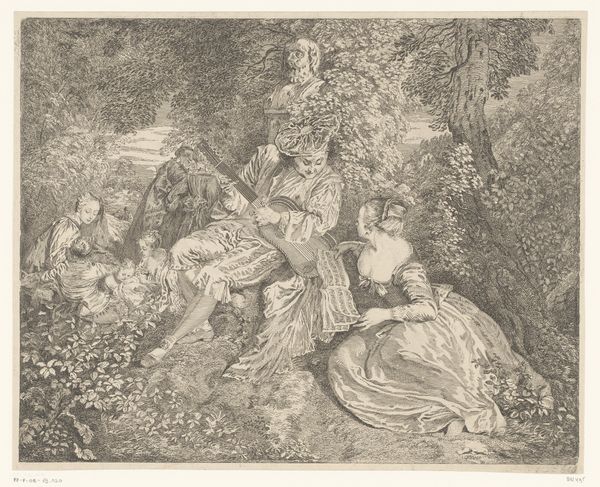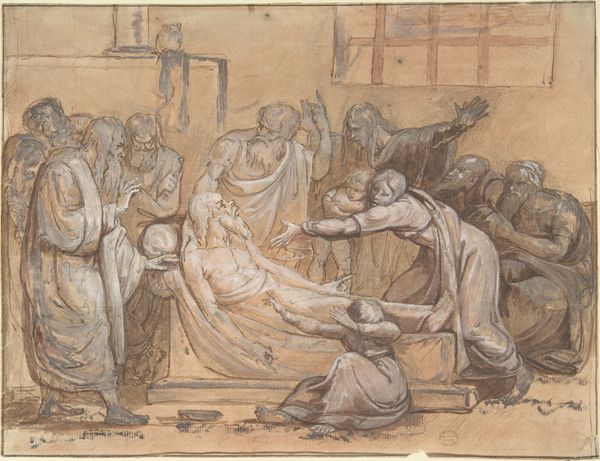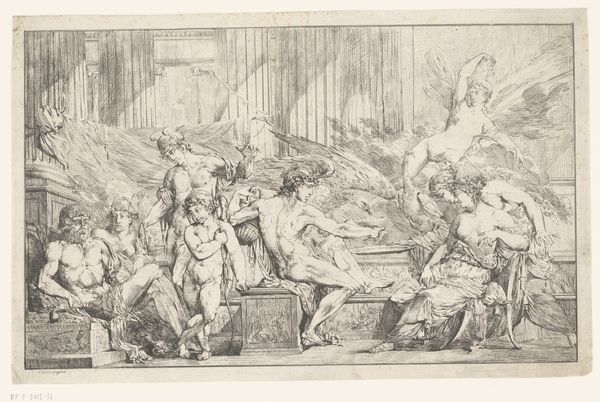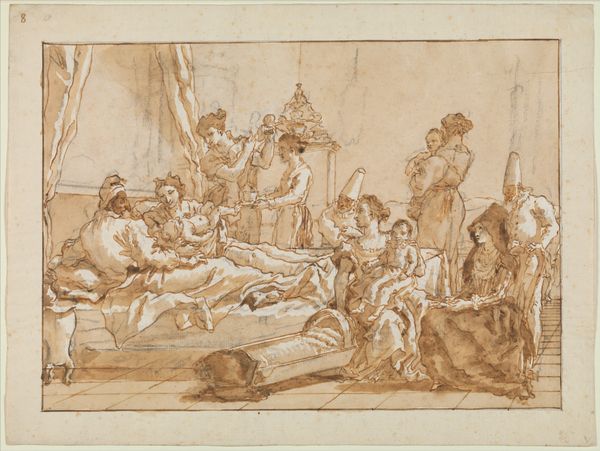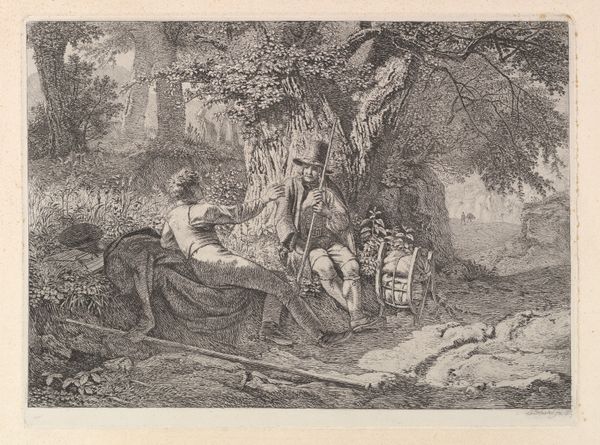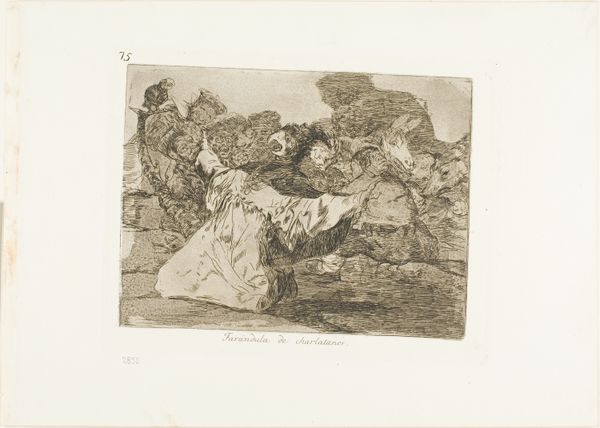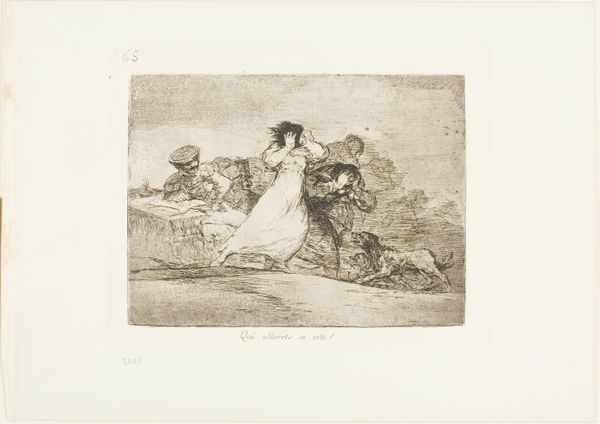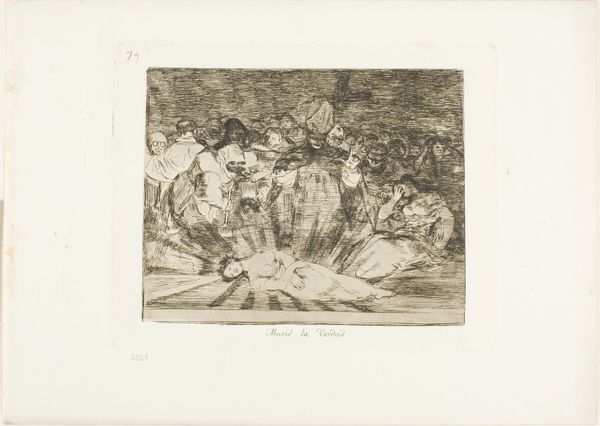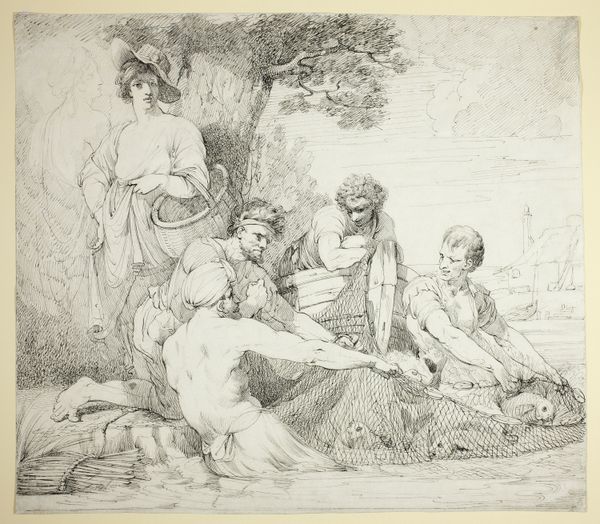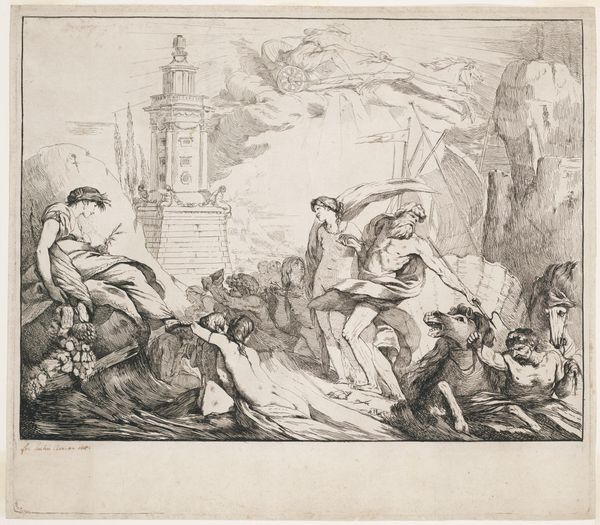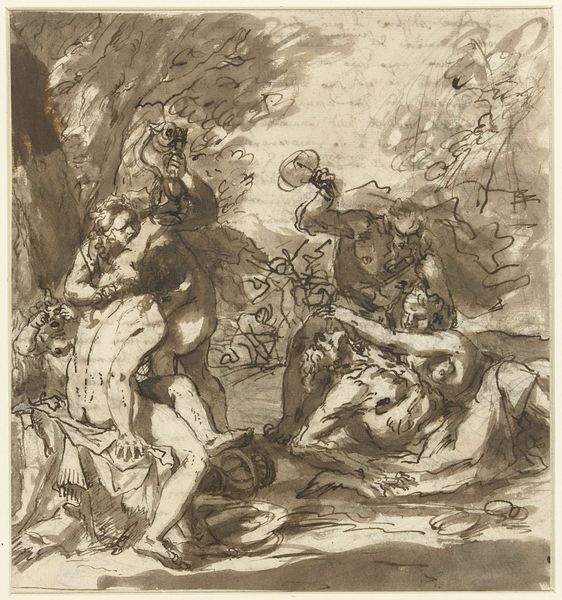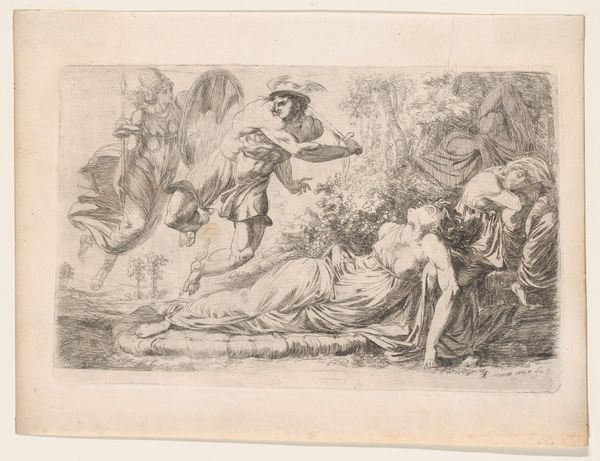
Dimensions: 264 × 423 mm (image); 329 × 459 mm (sheet)
Copyright: Public Domain
Editor: This is Auguste-Louis Lepère’s "Modern Bucolic," created in 1901. It’s an etching and print on paper, and it really strikes me how the artist captures a leisurely day. But there's almost too much happening; a strange combination of serene figures mixed with anxious, perhaps, wealthier ones. What social dynamics are at play here? Curator: That's a keen observation. "Modern Bucolic," made at the turn of the century, presents a fascinating commentary on social stratification through leisure activities. Can you see how Lepère depicts the "popular" leisure and the rise of the "beach" or the "countryside" as public spectacles and social performances? Editor: Yes, I see it now! There are women with fine dresses contrasted with what seem to be workers in a lower register of the composition. The print makes a political statement, doesn't it? How it was even accessible? Curator: Precisely! This image, in its style reminiscent of impressionism with a commitment to portraying everyday life, opens up the discourse of whose leisure counts, and whose labor makes that leisure possible. Etchings like this one democratized art consumption at a time when debates raged about what role art should have in public life. Did this elevate public social consciousness? Editor: So, its wide accessibility meant it was a part of this wider political conversation? It shows that a simple day at the beach can carry social meaning. Thank you so much! Curator: And how that "simple" day actually isn't for everyone. Reflecting on "Modern Bucolic," the artwork reveals the complexities behind accessible art, doesn’t it?
Comments
No comments
Be the first to comment and join the conversation on the ultimate creative platform.


